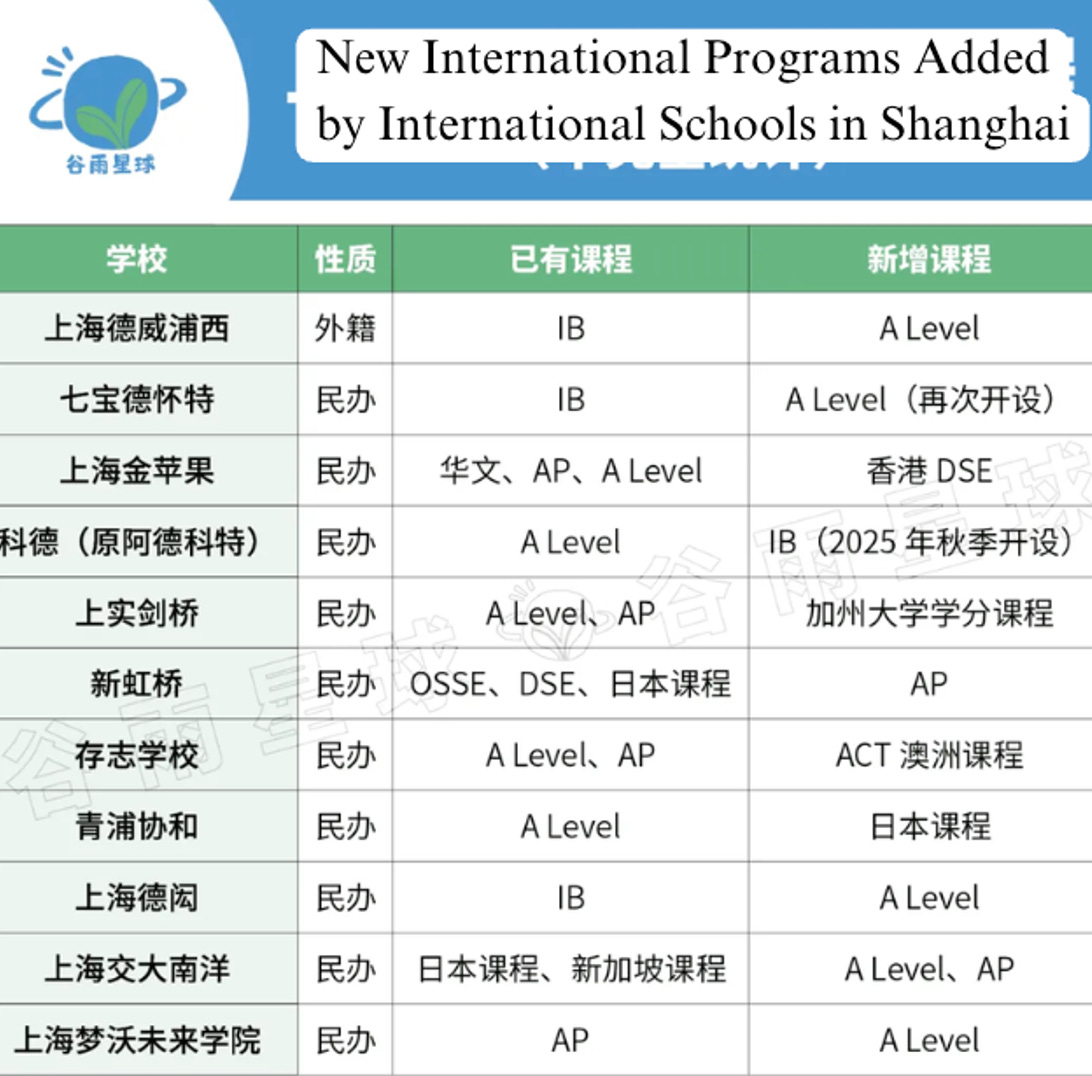[China’s International Schools in 2025] A Shift from Growth to Quality: The Rise of the “Double High” Era
[Intro]
In November 2024, the 10th VIS International Education Development Conference was held in Beijing, where the 2024 China International Schools Development Report was officially released. The report reveals a decade-long transformation in China’s international education—from rapid expansion to intense competition, and from a growth market to a survival game. With falling birth rates, tighter policies, and weakened family spending power, many schools are pivoting some are “public-izing,” others are expanding overseas or offering Gaokao tracks. The silent battle for survival has already begun.
📈 A Decade of Change: From Rapid Expansion to Market Saturation
Between 2015 and 2024, the number of international schools in China rose from 597 to 972, with private schools making up 57.1%. But the era of explosive growth is over:
Openings vs Closures: In 2024, 27 new schools opened, but only a net increase of 2 was recorded. Over 50 schools have closed in the past three years.
Tuition Stratification: The average annual tuition reached RMB 119,700. Top-tier schools raised fees by 10% yearly, while mid- and lower-tier schools face price wars.
Enrollment Decline: Total student enrollment dropped to 496,000, with kindergartens and primary schools hit hardest. High schools remain the last stronghold.
📊 Key Stats at a Glance
Private schools hold 65% market share, with 61% located in Beijing, Shanghai, and Guangzhou.
Average annual tuition:
Foreign-only schools: ~RMB 200,000
Private bilingual schools: ~RMB 125,700
Public school international divisions: ~RMB 80,300
⚔️ The Survival Battle: The Rise of “Public-Style” Rigor
To compete for a shrinking student base, international schools are raising academic standards:
Math & Science Intensity: AP, A-Level, and IB students face more drills and after-school tutoring. Math Olympiad classes now start in primary school.
Longer Hours: One-on-one tutoring until 8PM, foreign teachers running online Q&A groups, and weekly exams like those in public schools.
Rise of the Gaokao Track:
15+ private schools in Beijing now offer domestic exam prep
DSE programs are gaining traction in Shanghai
Dual-track systems attract undecided families
🧭 Diverging Parent Views
“Holistic education is ideal, but college results are the priority. If a school delivers, the tuition is worth it.”
“Better to skip the pressure—send them abroad earlier.”
🚀 Breaking Through: Overseas Expansion, Campus Growth, and New Programs
1. Elite Schools Going Global
YK Pao School expands to Hong Kong
Wellington opens in San Francisco
Malvern College, Maple Leaf Education move into Southeast Asia
Malaysia’s Chinese student population quadrupled in 4 years
2. Growth in Top Cities + Capital Investment
Expansion by top brands like BASIS Shunyi (Beijing) and WFL Lujiazui (Shanghai)
Shenzhen’s Mingwan School backed by Tencent
Hillhouse Capital acquires Dulwich & Dehong’s parent company
3. Curriculum Diversification for Survival
YCIS rolls out DSE, Dulwich Puxi adds A-Level, Keystone preps for IB
Kevin School in Beijing offers specialized math classes; HD Beijing adds early years programs to lock in younger students
🌍 Study Abroad Trends: Rising Alternatives and New Challenges
U.S. and U.K. remain top destinations: Over 330,000 Chinese students in the U.S. in 2023
Southeast Asia, Japan, Korea gain popularity: Better value for middle-class families
Belt & Road countries attract attention: Non-English study options are growing with strong policy support
But risks are rising:
High school-aged population will sharply decline after 2034
U.S./U.K. tuition hikes and visa restrictions may push families to look for alternatives
🔮 Looking Ahead: Quality and Differentiation Are Key
“The golden age is over. From now on, quality and positioning will decide who survives.” — Wu Yue, CEO of New School Talk
What this means for schools:
Internal improvement: Let college results guide curriculum design. Parents want both holistic growth and Ivy League potential.
Global expansion with local grounding: Going abroad needs real local engagement—not surface-level “internationalization.”











